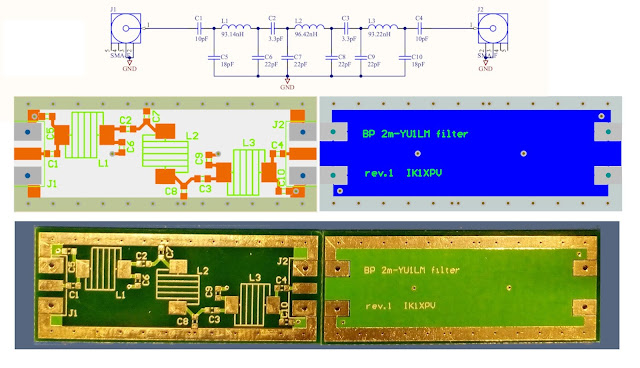RX888
Yesterday I received the RX888 designed by Justin Peng and Howard Su.
The first impression in opening the shipping package is that it is very small. It is as big as the Cypress fx3 superspeed explorer kit !
Thanks to Guy Atkins' SWLing post I was able to resist the desire to open it right away to see the interior. I started looking at HF. I connected it to my old I7-3770 pc and to the 10 meters wire antenna that I have on the balcony of my house. My city is Turin and here the local transmitter in MW has frequency 999000 Hz synchronized to a high precision reference.
I tuned this station and without calibration of the internal oscillator of R888 I measured an accuracy better than 1 ppm. This is not obvious after a transport of more than 10000 Km.
In case there is the internal trimmer that allows you to calibrate the reference oscillator when you have a reliable reference.
In case there is the internal trimmer that allows you to calibrate the reference oscillator when you have a reliable reference.
Frequency calibration test
The ExtIO_RX888.dll v0.4 has the gain scale calibrated without subtracting the 20 dB LNA's gain to the input signal measurement. In the calibration options of HDSDR I set a 20 dB loss that takes the LNA's gain into account
To compare the gains I used my 20MHz /- 24 dBm reference, used also in measurement of noise figure .
I noticed that the third harmonic of my 20 MHz generator, 60Mhz is tilted at 4 MHz. I think this is due to the choice to use a wider HF input filter. You can notice other very low signals perhaps due to the SI5351a, they are similar on my BBRF103.With the amplitude scale calibrated to the input level I connected a 50 Ohm load to the input.
Here is the resulting spectrum with the antenna terminated at 50 Ohm.
There are few spurious signals.
There are few spurious signals.
50 Ohm terminated antenna
The noise figure can be estimated measuring the rms noise level over a 10 KHz band.
In the picture we measured about -115 dBm. To these we add -40 dB = -10log ( B = 10000 Hz)
and finally we remove KTB for B 1Hz = -174 dBm at room temperature.
NF = -115 -40 - ( -174 ) = 19 dB +/- 2dB error
If we remove the 50 Ohm terminator the spurious level rises a little bit. I think it depends on spurious pairings to the antenna input line inside the box. They are attenuated when we connect an antenna or the 50 Ohm load and the impedance of input line decreases.
Full HF spectrum in real time
Here in Turin there are many very strong FM stations.
This is why I have noticed that the attenuation of the spectrum above 30 MHz is not sufficient to completely erase the interference from a local transmitter at 94,400 MHz which sampled at 64 MHz is received even at 94.400 - 64.000 = 30.400 MHz. In case of strong local interference an external lowpass or FM notch filter may eliminate it. The little FM band interference may be present from 24 MHz (88 - 64 MHz) up.
On the other hand, the wider input filter will allow higher sampling rates to be tested. Up to 100 Msps using the current architecture. Higher up to 130 Msps using the full band of the ADC, as written on the container, if it will be possible to generate a GPIFII machine in the FX3 able to pack the samples at 32 bits.
Here is a picture of 8MHz of the FM band.
FM Band
Justin and Howard made a nice apparatus. Bravi! They integrated the FX3014 into a single PCB. They used an LNA to improve the noise figure. They have eliminated a switching power supply to reduce power supply noise.
The mechanics are nice and the cooling system is effective and quiet. The box reaches 45°C after 1 hour use at 20°C room temperature. The weight is 165 grams.
They modified the ExtIO.dll software and the dll dialog box has been changed to simplify the GUI. The current version is v0.4.
In the Franco Venturi's group Next Generation Software Defined Radios (SDRs) .
There will be interesting evolutions of this architecture both in the Linux and Windows world.










Comments
Post a Comment